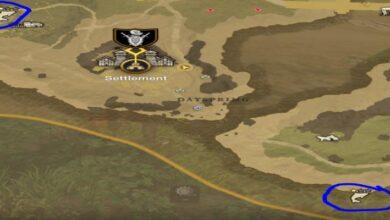The Ultimate Guide to Building an Upside-Down Fire for Your Fireplace
Estimated reading time: 9 minutes.
Have you ever wanted to start a fire that burns for an impressive 3-7 hours without constant attention or adding more wood? Well, it’s possible, but you need to forget everything you know about traditional fire-building methods.
As someone who has always considered myself skilled at making fires, I’ve learned that the initial burst of flames and warmth quickly fades away, leaving you with the tedious task of constantly tending to the fire to keep it alive. The method I learned, known as the “tipi” fire, relies on arranging paper, tinder, and kindling in a specific way. However, it’s not foolproof and often requires dry wood to work effectively.
That’s where the Upside-Down Fire comes in.
Introducing the Upside-Down Fire Method
Believe it or not, it was one of my female readers, Marcie, who introduced me to this unconventional yet highly effective fire-building technique. She was seeking the best way to start fires in her mountain-side cabin, and what we discovered was truly remarkable.
Even I, initially skeptical, had to try it for myself.
The Upside-Down Fire method is remarkably simple: do the exact opposite of the tipi method.
Here’s how it works:
- Start by placing the largest logs at the bottom, making sure there are no gaps between them.
- Layer smaller logs on top of the larger ones, again ensuring a tight arrangement.
- Repeat this layering process until you reach the top, where you’ll place crumpled paper and 3-5 fire-starter squares or sticks.
Now, let me show you the step-by-step process using images taken at my home on Long Island:

The final construction after three minutes of assembly. After lighting, I wouldn’t touch it again for about three hours.








In my second experiment, I used about 50% less wood but achieved a similar burn time. The embers produced by this fire are truly remarkable.
The Benefits of the Upside-Down Fire
Apart from its unique construction, the Upside-Down Fire offers several advantages:
1. Increased Heat: As the fire progresses through the layers, it generates a significant amount of heat. In my recommended sequence of large logs, split logs, sapling wood, cedar shingle wood, plus paper and fire-starting squares, you’ll experience much more heat compared to a traditional tipi fire. Additionally, the fire warms the flue’s air, creating a more efficient current and minimizing heat loss.
2. Minimal Smoke: The thermodynamics of the Upside-Down Fire reduce or even eliminate smoke production. This is especially beneficial since many fireplaces aren’t designed to handle smoke efficiently, resulting in unwanted backdrafts into the house.
3. Low Maintenance: Once constructed with tightly arranged logs, the Upside-Down Fire burns beautifully for 3-7 hours, depending on the amount of wood used. Unlike the constant tending required by a tipi fire, you can enjoy the warmth without the need for frequent adjustments. However, it’s important to note that this method requires a substantial amount of wood, making it less practical for outdoor survival situations.
4. Minimal Ashes: One surprising aspect of the Upside-Down Fire is that it burns down to almost nothing. Each fiber of wood is efficiently converted into heat, leaving behind very little waste.
Tips for Building a Successful Upside-Down Fire
While constructing an Upside-Down Fire is relatively straightforward, here are a few things to keep in mind:
Be patient: The Upside-Down Fire takes longer to produce large flames. It may not appear impressive for the first 20 minutes or so. The goal is to create embers that gradually fall to the next layer, which is why it’s crucial to eliminate any spaces between logs.
Elevate the fire-starters: When placing the paper strips and fire-starting squares on the top layer, ensure they are slightly elevated above the shingles or layer below. This elevation allows the paper to catch fire more easily, preventing frustration during ignition.
Don’t let tending to your fireplace become a full-time job. Embrace the warmth and efficiency of the Upside-Down Fire, even if it challenges conventional wisdom.
Insights from Our Readers
Our readers have shared some valuable tips and modifications for outdoor and survival use, as well as tipi-style fires for cooking:
From Kalavic:
“For outdoor applications, I recommend building a mini ‘log cabin’ on top of the fire-starters, surrounded by a small gate to prevent drafts from extinguishing the fire in its early stages.” (Also refer to JBB’s suggestions.)
From Andy:
“Even if you prefer a tipi-style fire, try lighting the end of a rolled-up newspaper and hold it up the chimney for 10 or 15 seconds before lighting the fire. This helps create airflow and prevents any backdrafts.”
This article was inspired by The Tim Ferriss Show, one of the most popular podcasts worldwide. To access all past episodes for free, visit this page.
Remember, building an Upside-Down Fire is not just about creating warmth, but also about mastering a skill that ensures long-lasting heat and comfort.




